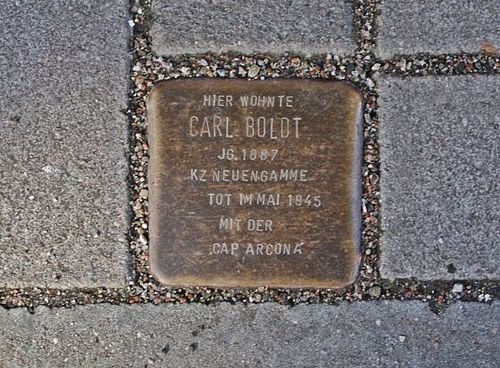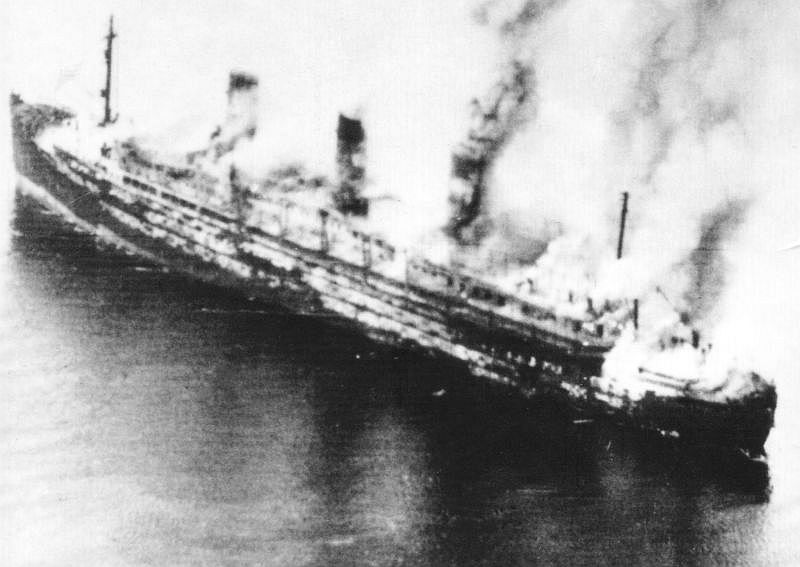Stumbling Stone Soltaustraße 12
This small, brass, memorial plaque (Stolperstein or stumbling stone) commemorates:
* Carl Boldt, born 1887, Neuengamme Concentration Camp, dead in May 1945 with the Cap Arcona.
Carl Boldt and Olga Elmers married and had three children: Frieda (b. 1908), Karl (b. 1909), and Emma (b. 1912). He worked as a machinist in the Bergedorf Ironworks for several years. Before WWI he was a member of the social democrat party, and after the war he became a member of the independent social democrats, which merged with the communist party in 1920. From 1927 to 1930 he was a representative in the Bergedorf local parliament.
In 1933 he was arrested and taken to Fuhlsbuettel concentration camp and held there for a few months before being released. He found a job, and in his spare time he sealed fruits and vegetables into cans for preservation. When a laborer came in August 1943 to get some cans sealed, Boldt made some negative remarks about the Nazis, which the laborer reported. The Gestapo arrested Boldt and sent him to Neuengamme, where he operated a switching panel in the brick-making works.
When the Nazis emptied the camp in April 1945 before the arrival of the Allies, thousands of prisoners were put on the ship, the Cap Arcona, which became an overcrowded concentration camp with no food and no drinking water. The Cap Arcona and several other floating concentration camps were hidden in plain sight among other troop ships. With a goal of keeping the Germans from escaping by boat, the British bombed the ships in the harbor. Approximately 7,000 concentration camp prisoners died by fire or drowning, or were shot by Germans on the shore.
Four days later, the Germans signed an unconditional surrender of all German forces to the Allies.
"Stolpersteine" is an art project for Europe by Gunter Demnig to commemorate victims of National Socialism (Nazism). Stolpersteine (stumbling stones) are small, 10x10cm brass plaques placed in the pavement in front of the last voluntary residence of (mostly Jewish) victims who were murdered by the Nazis. Each plaque is engraved with the victim’s name, date of birth, and place (mostly a concentration camp) and date of death. By doing this, Gunter Demnig gives an individual memorial to each victim. One stone, one name, one person. He cites the Talmud: "A human being is forgotten only when his or her name is forgotten."
For more information and photos about the Cap Arcona, please see Floating concentration camps in the Bay of Lübeck.
Do you have more information about this location? Inform us!
Source
- Text: Fedor de Vries & Anne Palmer
- Photos: Gudrun Meyer
- Stolpersteine Hamburg: Carl Boldt
- Stolpersteine.eu
Related books
Nearby
Museum
Point of interest
Monument
- Bust of Emperor William I - Hamburg-Bergedorf
- War Memorial Lohbrügge - Hamburg-Lohbrügge
- Franco-Prussian War Memorial Reitbrook - Reitbrook
Cemetery
- Soviet War Graves Bergedorf - Bergedorf
- German War Graves Bergedorf - Bergedorf
- Tombstone Karl Dönitz, Aumühle - Aumühle







